Thirty years ago today (27 July), the final Citroen 2CV was assembled in Portugal. And one day, when the internal combustion engine has finally ground to a halt, and motoring as we know it today is the subject of a documentary on the History Channel, the 2CV will be remembered as one of the most innovative and important vehicles of the 20th century.
In its day, the 2CV – or Deux Chevaux – was no less groundbreaking or forward-thinking than the technologies being used to forge an autonomous and connected future for the automobile. So, as we mark the anniversary of the ending of 2CV production, let’s take a basket of eggs across a ploughed field to celebrate the life of the ‘tin snail’.
The TPV
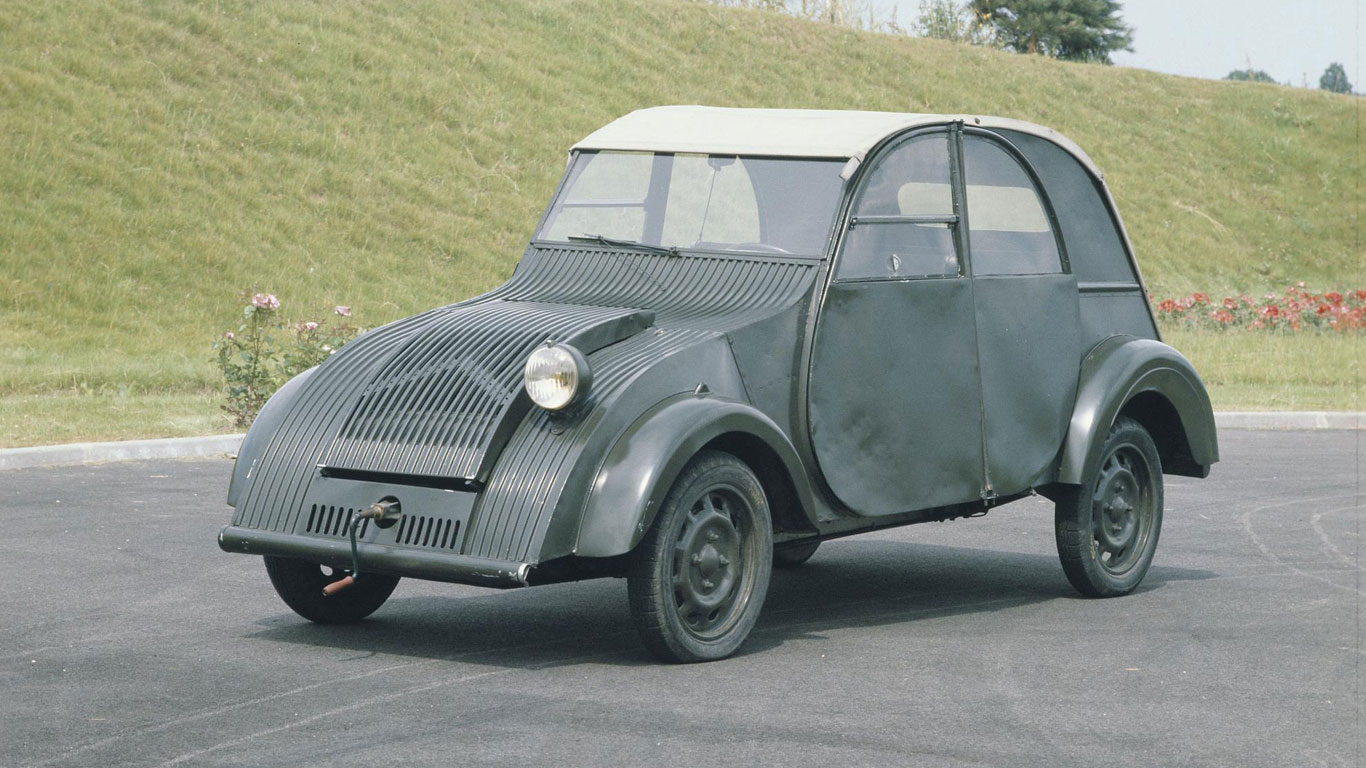
The Citroen 2CV was born, not in 1948, but in 1936, as the TPV, or Toute Petite Voiture (Very Small Car). Andre Citroen, the firm’s brilliant innovator and founder, had passed away a year earlier, with the company now under the control of Michelin and still reeling from the effects of bankruptcy. Pierre-Jules Boulanger was the architect-turned-engineer behind the project, who briefed Andre Lefebvre and Flaminio Bertoni on his requirements for a new car.
“Build me an umbrella with four wheels,” he said, in a brief that hints at the car’s simplicity, if not Boulanger’s exacting standards. This was to be a car for people with no experience of machinery, mobilising the rural communities of France like never before. Seats for two peasants and space for 50kg of potatoes or a small cask of wine was central to the requirement, along with an ability to travel across a ploughed field without breaking the eggs being carried in the car. Brilliantly, Boulanger rejected any design proposals if he was unable to sit in the car without removing his hat.
Outbreak of Second World War
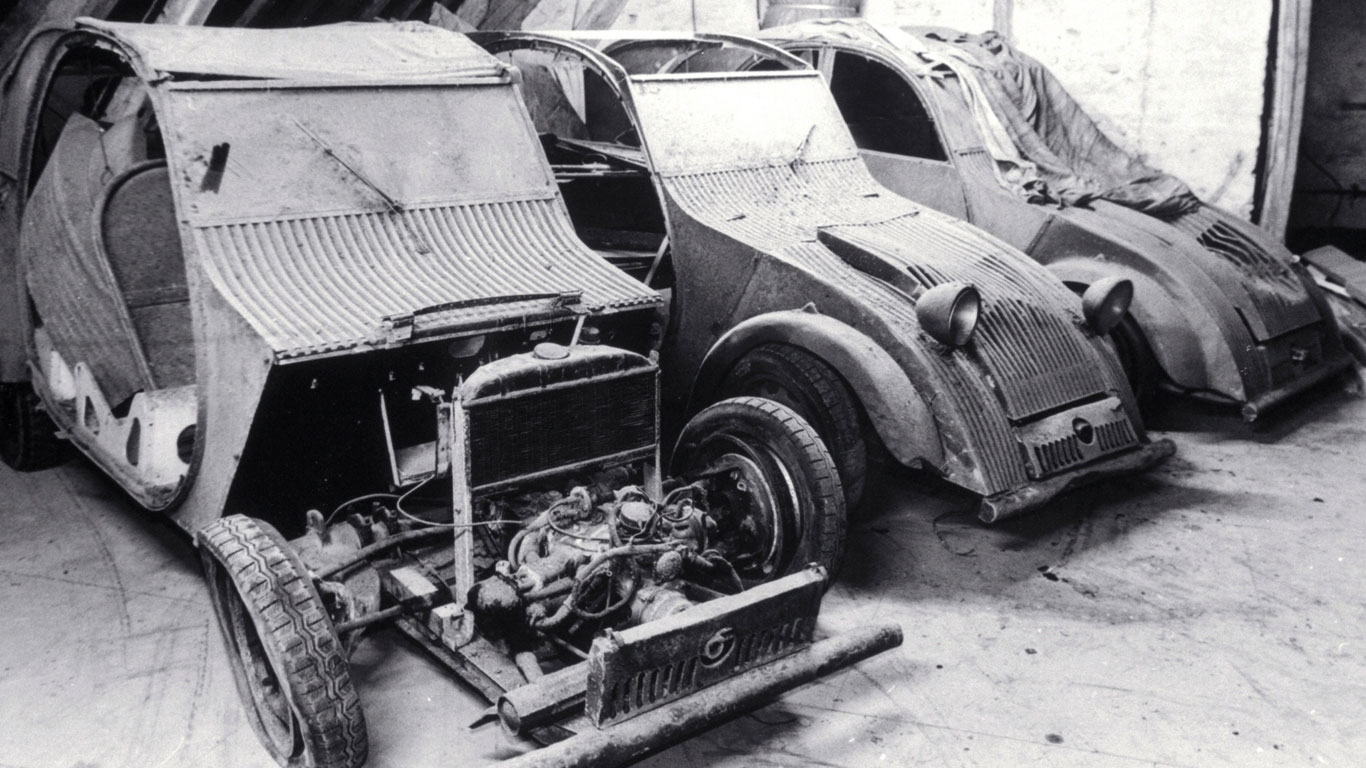
To Boulanger, the appearance of the car was not in the least bit relevant. This was to be a vehicle for the farmers, smallholders and winegrowers of rural France, designed to replace their bicycles, horse-drawn carts and pony traps. Anything superfluous to the need for simplicity, practicality and ease of use would be deemed unnecessary. The TPV was undoubtedly lacking in aesthetic appeal, but for Boulanger, it was just the job.
Production was authorised in 1938, with Boulanger ordering 250 TPVs to be ready in time for the 1939 Paris Motor Show. The outbreak of war prevented the TPV from making its debut, and Boulanger requested that the first batch of vehicles be hidden away until the end of the conflict. Later, the original TPVs were to be destroyed, but some escaped the cull, including three discovered at a barn at La Ferte-Vidame in 1994.
Post-war redesign
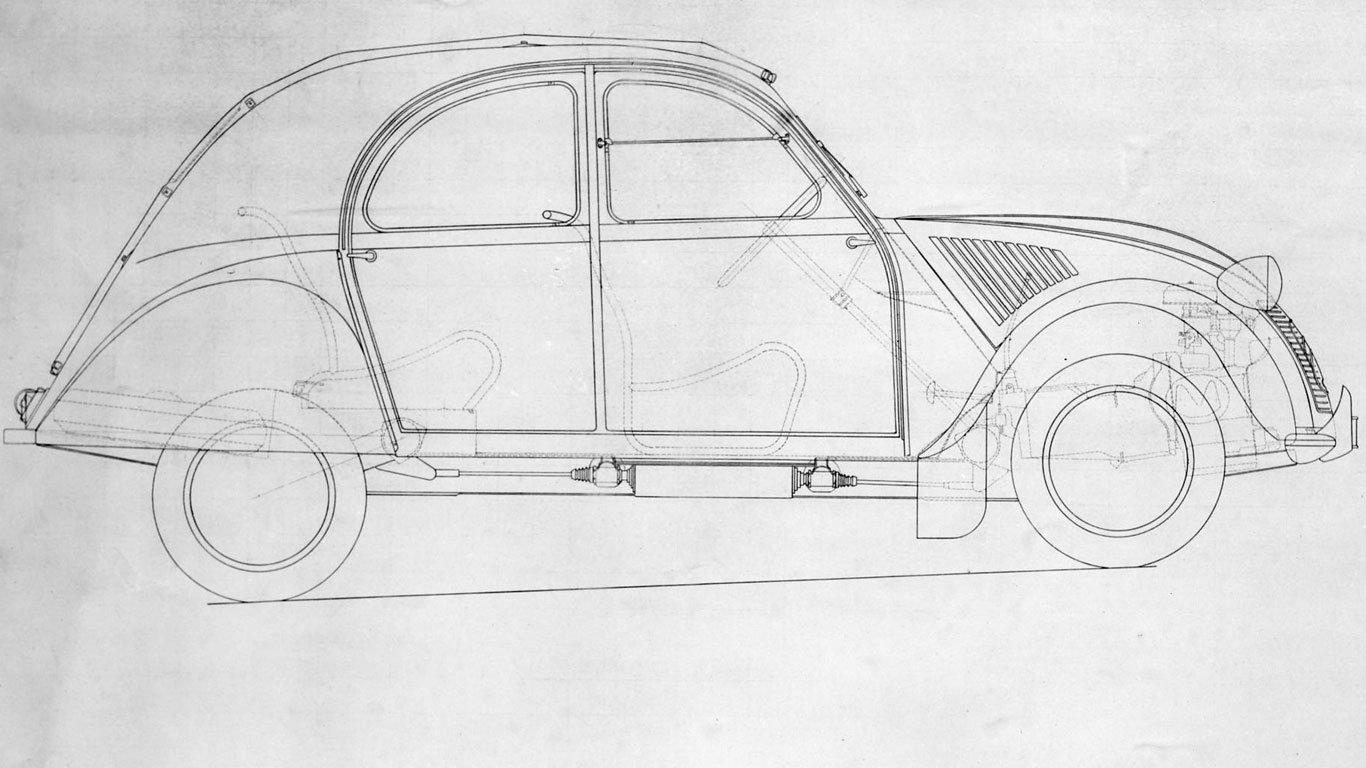
Research and development had continued in secret during the war, giving Citroen the time to work on a complete redesign. Just like the equally innovative Traction Avant, the new car would be front-wheel drive, but the post-war vehicle was radically different from the TPV. An air-cooled engine replaced the original water-cooled unit, the torsion bar suspension was replaced by coil springs, and the body was built using steel and not aluminium.
Other changes included the tubular-framed benches to replace the hammocks of the TPV, a second headlight, proper window glass and a heater. Such features might be labelled ‘luxuries’ in a car borne out of a desire to create something resolutely simplistic, but they tipped the hat to creature comforts.
1948 Paris Motor Show
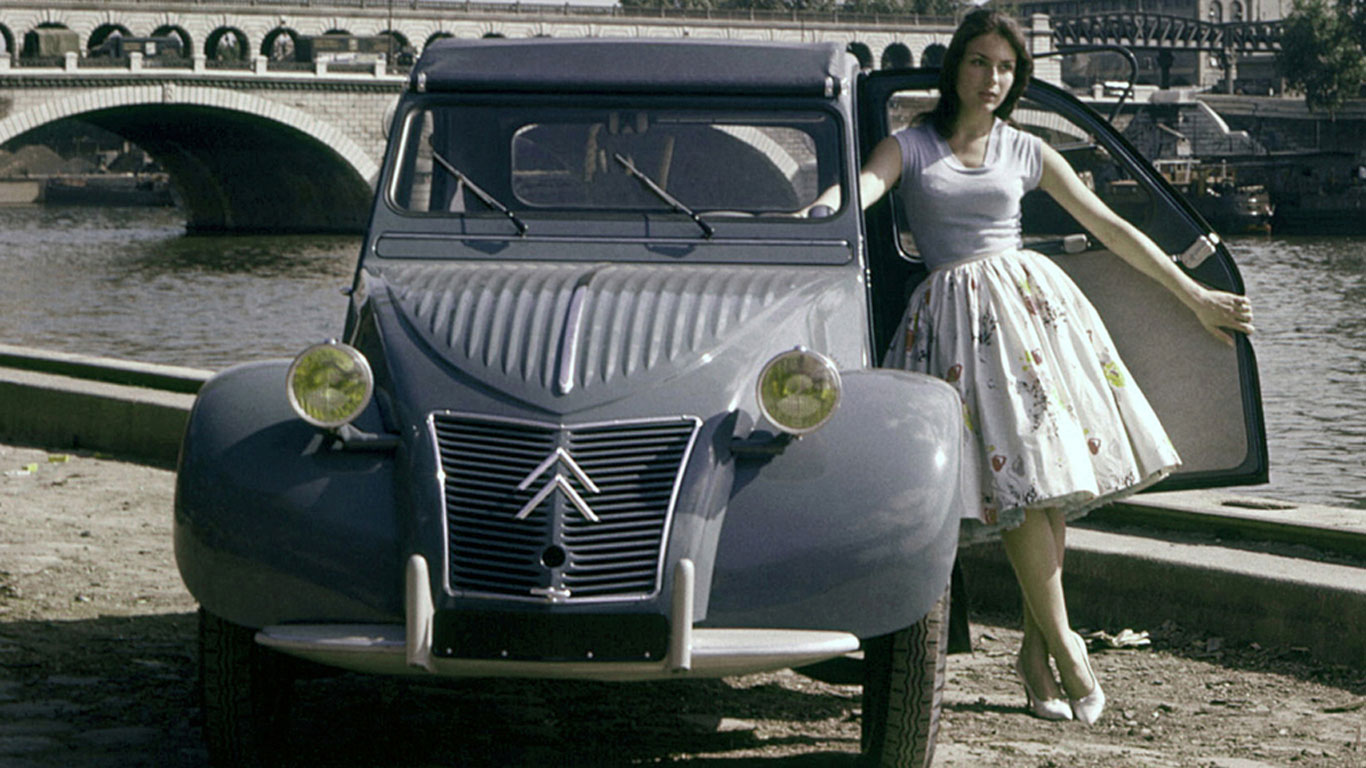
In October 1948, the 2CV sat beneath a tarpaulin cover at the Paris Motor Show, the crowds eager to grab a glimpse of Citroen’s first new model since the Traction Avant of 1934. Seven years later, Citroen famously wowed the crowds at the same motor show when it unveiled the DS, but the reaction to the 2CV was a little more mixed.
Initial reception
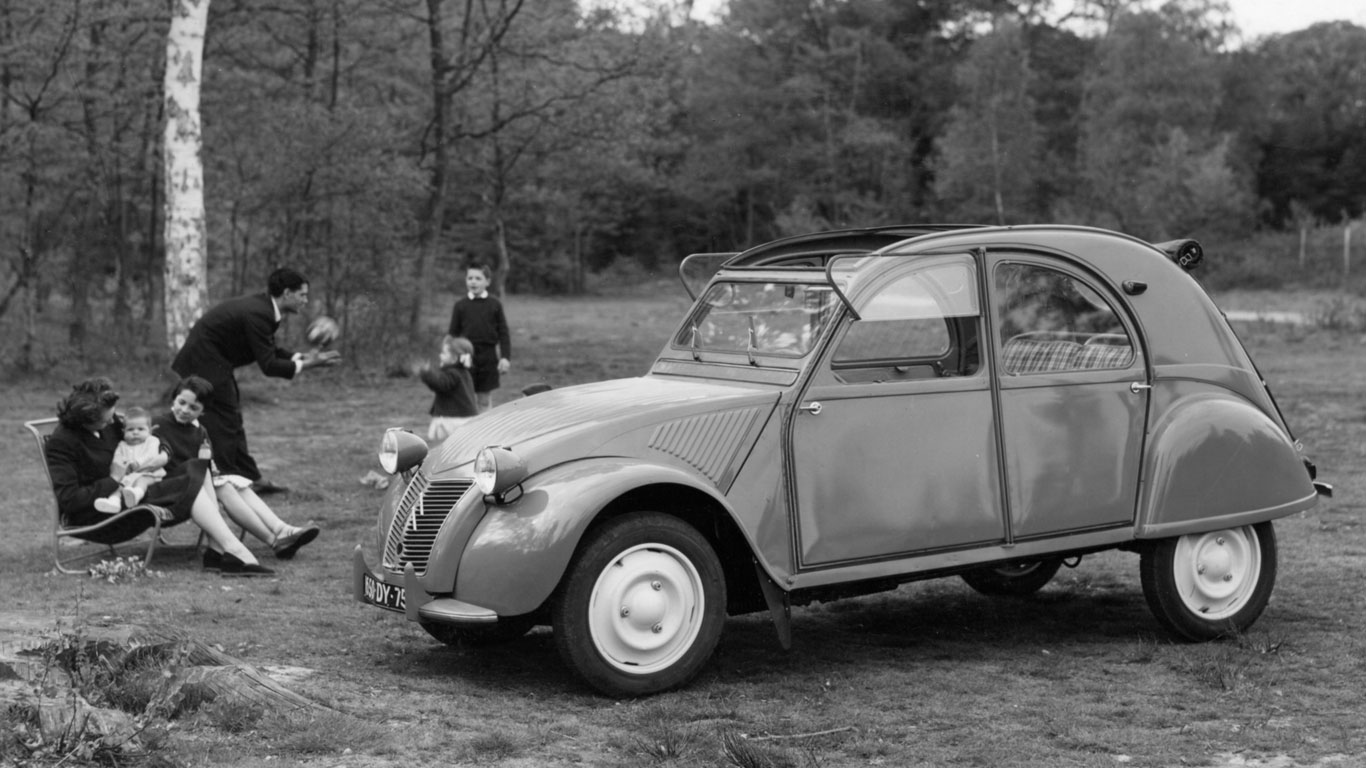
Contemporary reviewers were critical of the car’s design, while Citroen dealers pleaded with the company to give it a little more showroom appeal. But Boulanger stood firm, and the French began voting with their feet. The public’s response was overwhelming, with crowds of people keen to get a closer look at the three models on display. By the end of the show, around 250,000 people had visited the Citroen stand.
Early sales
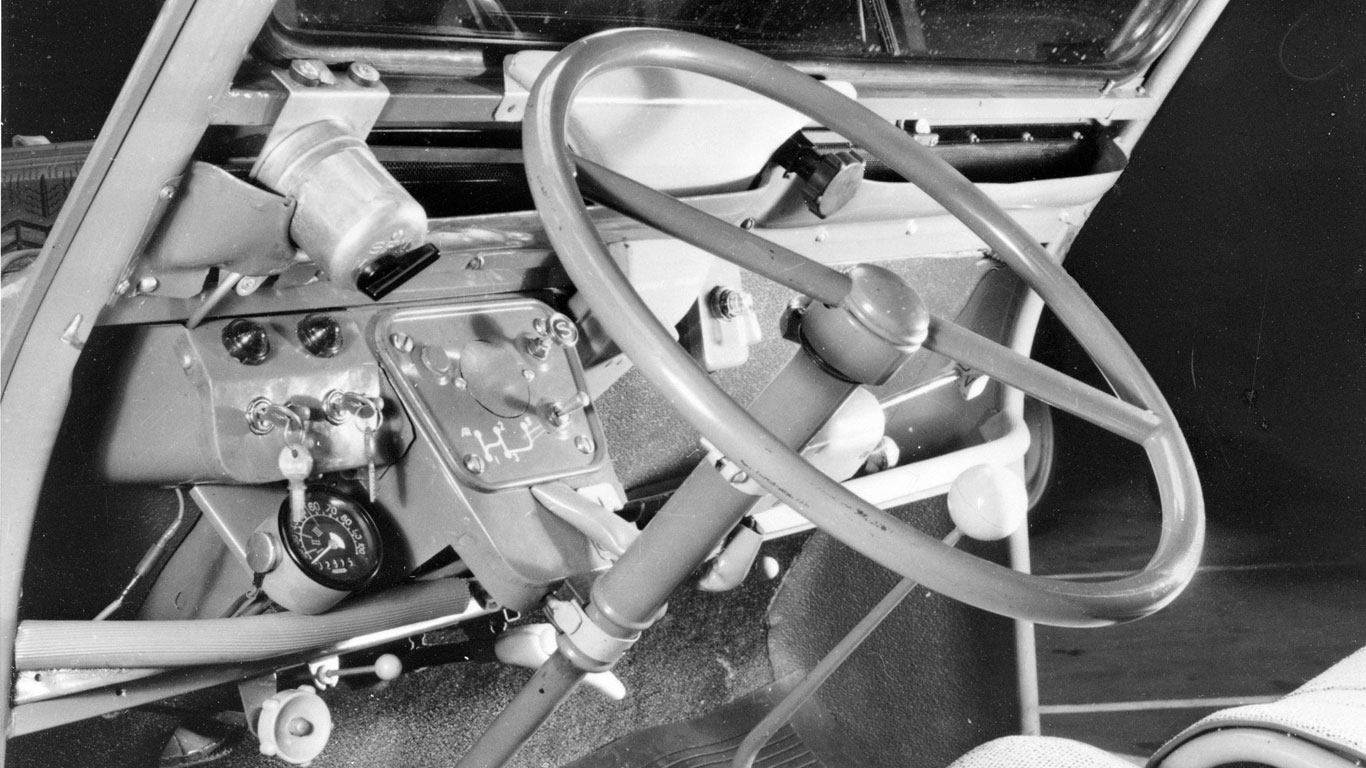
Sales commenced in 1949, with 876 cars built before the end of the year. Citroen increased the price, but that did little to deter would-be owners, and the waiting list grew to 18 months. Citroen prioritised deserving customers, such as doctors, midwives and vets, but as per the original design brief, winegrowers, farmers and smallholders were also given special treatment. Not even deep pockets or influence could allow anyone to jump the queue.
Citroen 2CV AZ
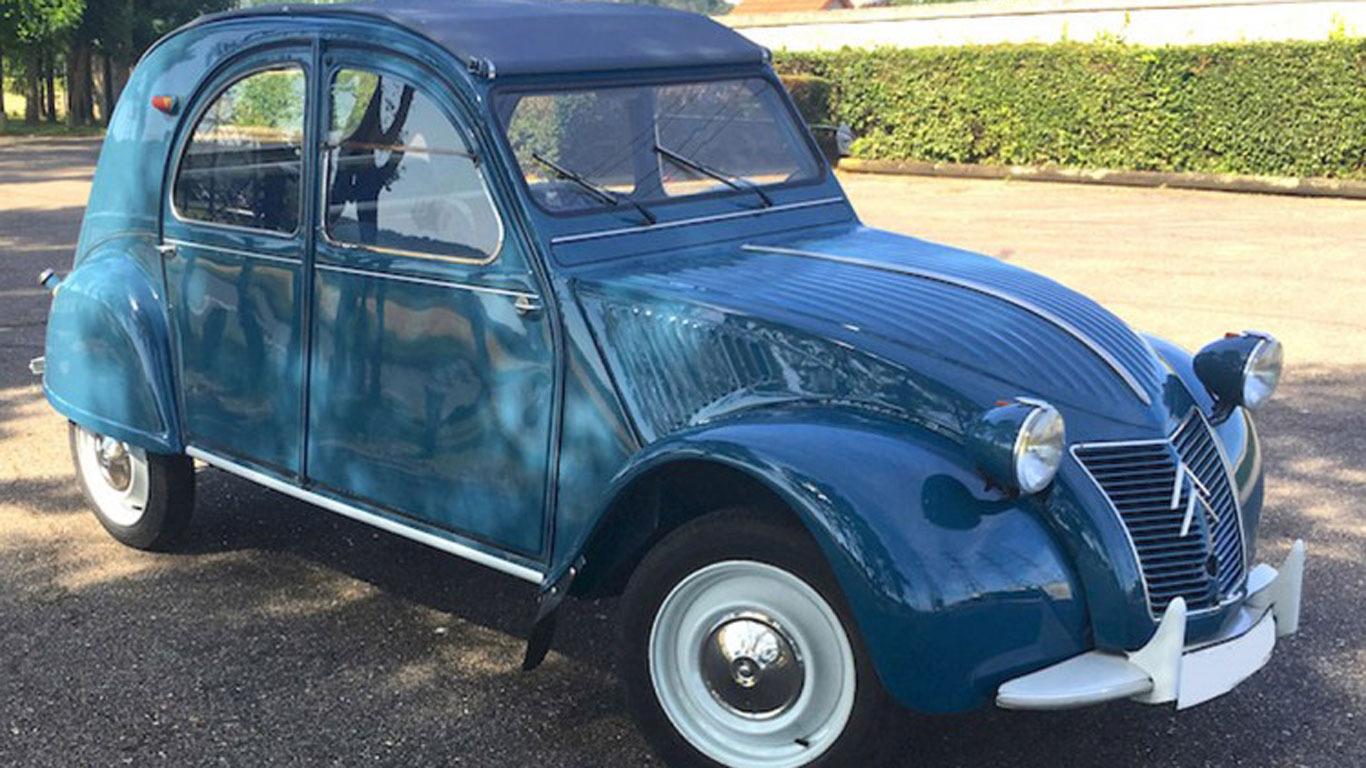
The 2CV’s success was no accident. Here was car utterly in-tune with its audience and socioeconomics of its home nation. These were the days before the advent of the autoroute, with much of France consisting of widely scattered villages and market towns. As a cheap runabout, it appealed to the income-starved population, while its simple design meant that it could be maintained by the network of rural mechanics. In 1954, the AZ joined the range, featuring a larger version of the 425cc engine and a centrifugal clutch.
Citroen 2CV AZL
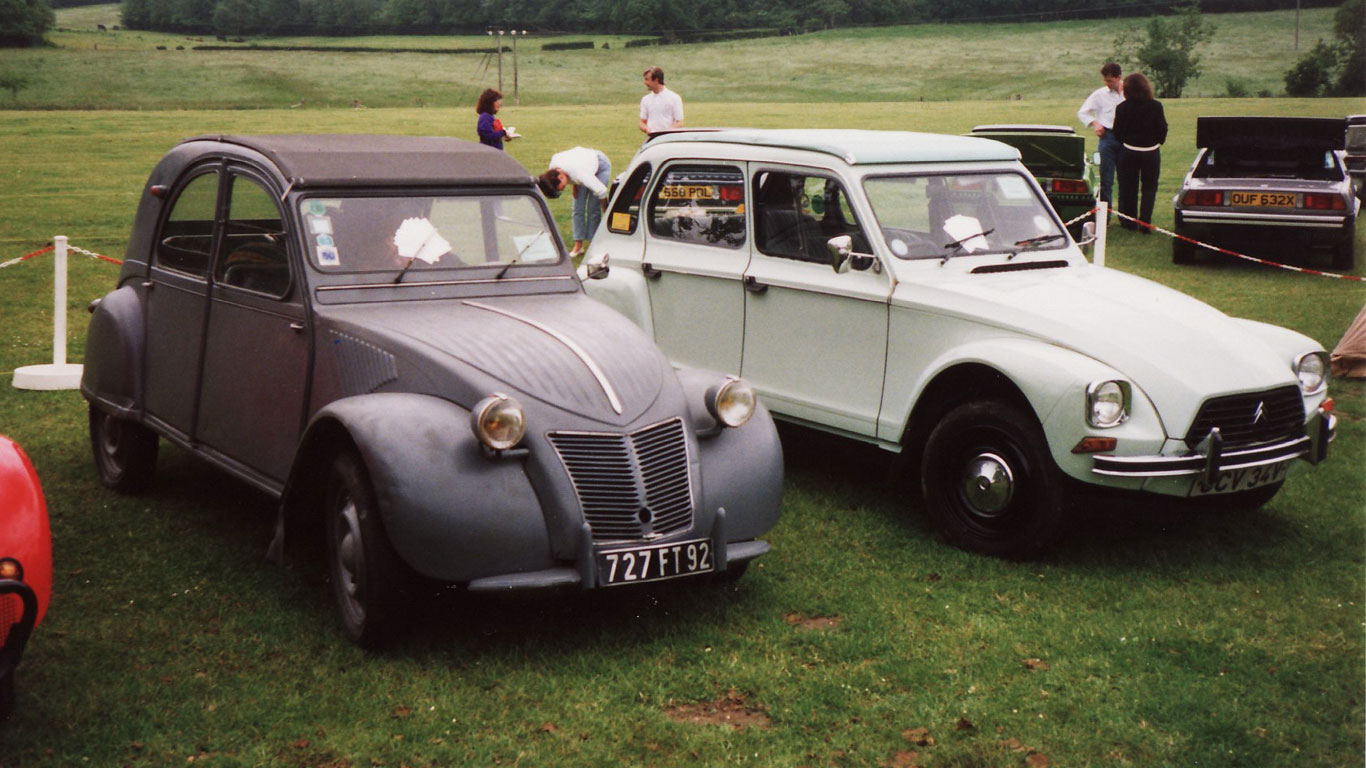
In 1945, the range was extended with the introduction of the AZL, with the ‘L’ standing for Luxe. If the idea of a luxury Citroen 2CV sounds like a contradiction in terms, the AZL was hardly dripping in excess. A demister for the driver’s side, seats covered in plasticised cotton, a larger rear window and chrome detailing strips were about as luxurious as things got in a 2CV. Buyers paid a 40,000 francs premium on top of the 352,000 francs for a basic 2CV.
Citroen 2CV AZLP
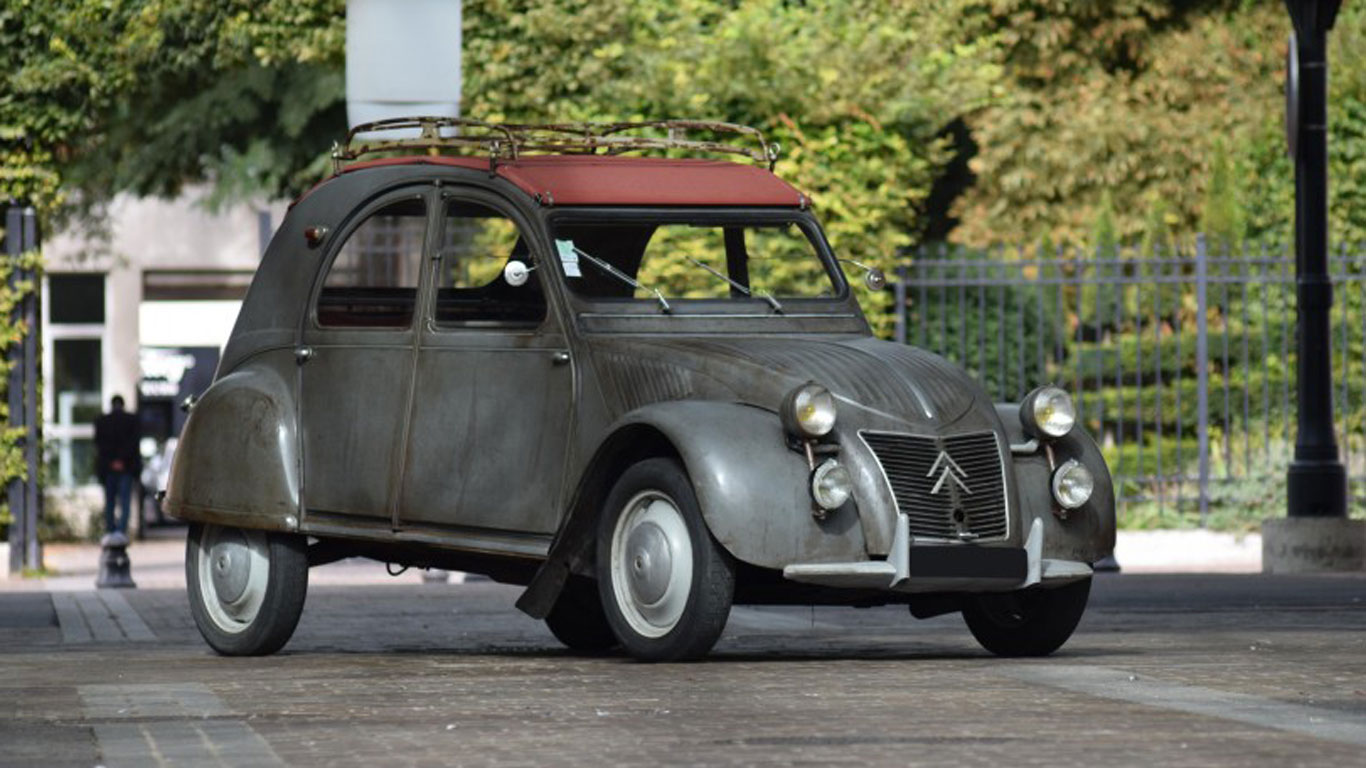
The 2CV AZLP arrived in 1958, and with it came the introduction of a new metal boot lid. The original full-length canvas and roll-up boot cover remained on sale until 1967, but the majority of owners opted for the security of a lockable boot. This is a 1959 2CV AZLP fitted with a number of options, including extra headlights. It sold at an Artcurial auction for €19,000 (£17,000) in 2017.
Citroen 2CV 4×4 Sahara
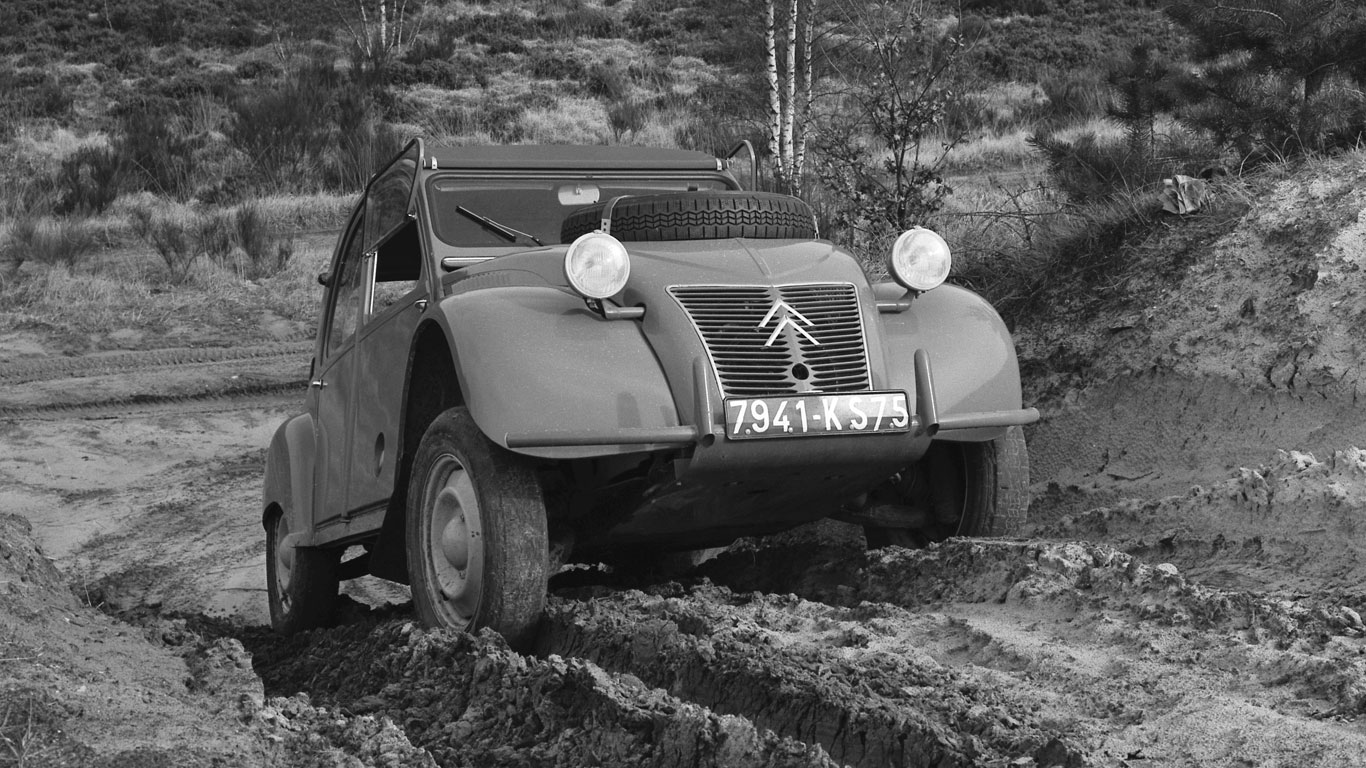
The Citroen 2CV 4×4 – or Sahara – was a truly remarkable machine, not least because of the second engine and gearbox mounted in the boot. With both engines running, the 2CV 4×4 could reach a top speed of 62mph, while its low weight and 50/50 weight distribution delivered mountain goat-like climbing skills. It wasn’t cheap, which meant only 693 were ever built, while its intended use means that very few are left. This thing is cool in a way that a modern crossover can only dream of.
Citroen 2CV facelift
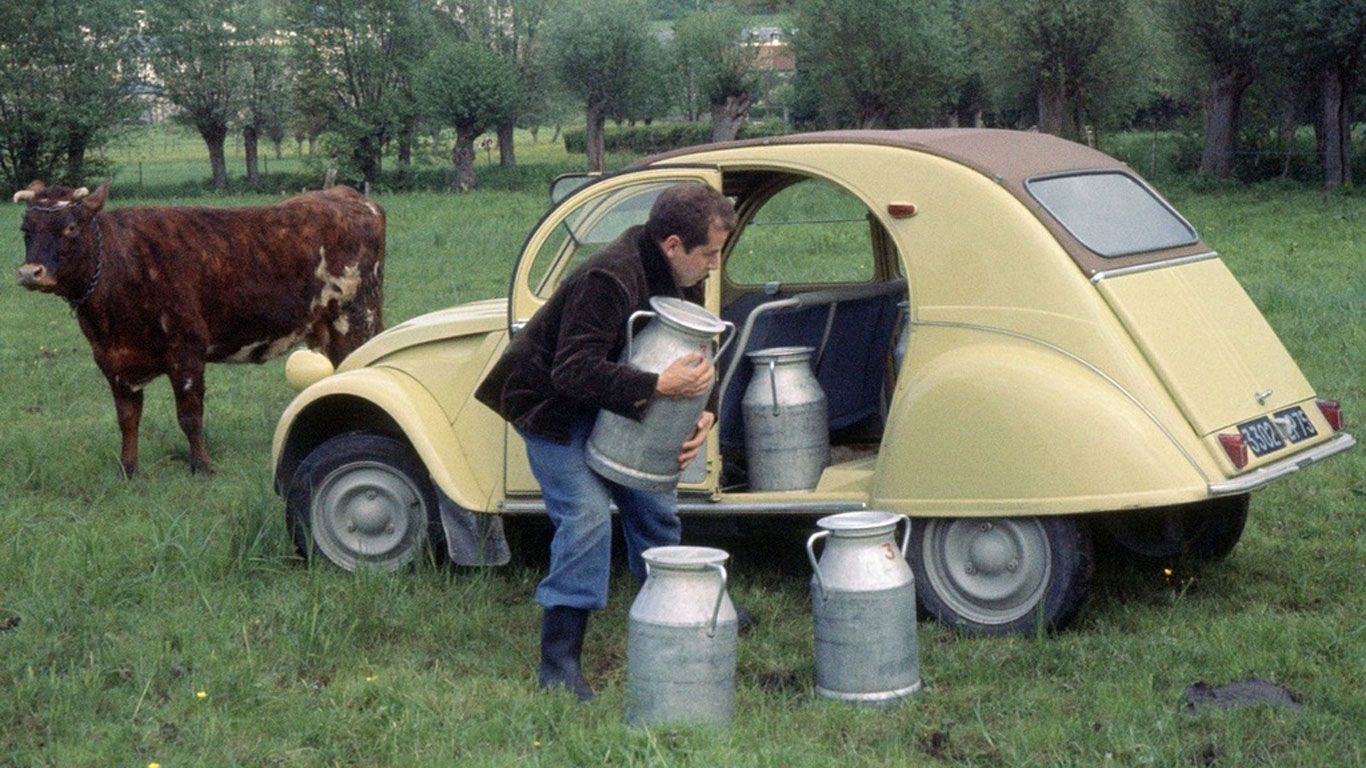
A cow, a French farmer, milk churns, a cow pat and a Citroen 2CV: there’s something reassuringly authentic about this photo. Of note is the fact that this a facelifted 2CV, introduced in 1960. A new grille and bonnet were the most visual changes, while the engine and interior were left unchanged. But more changes were to come, with Regie about to unleash the 2CV’s first genuine rival…
Renault 4 arrives
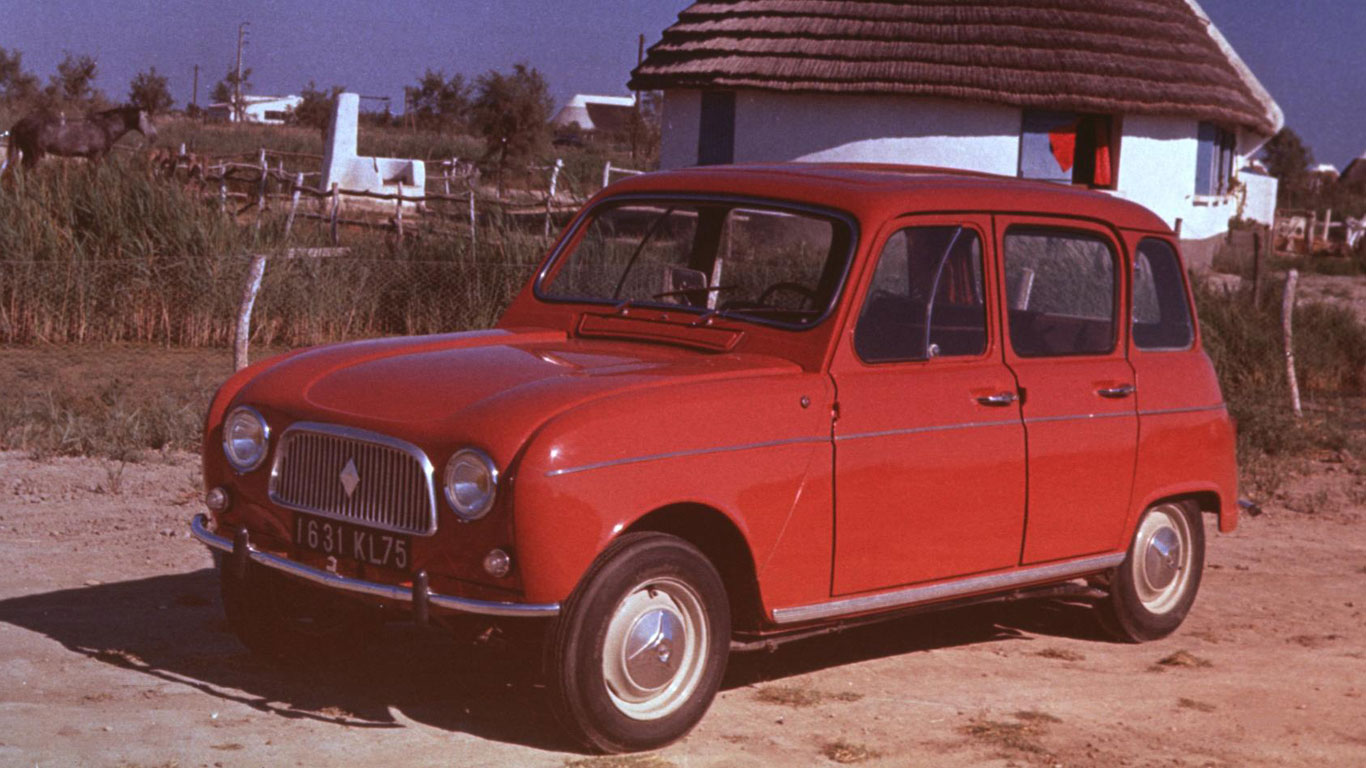
Renault took a while to build something to take on the 2CV, but the 4 represented a hammer blow to Citroen’s rural dominance. The Renault 4 was more conventional than the 2CV and could boast a substantial rear tailgate, making it more practical than the Deux Chevaux. Citroen responded with a new dashboard, electric windscreen wipers and an increase in horsepower.
Citroen 2CV AZAM
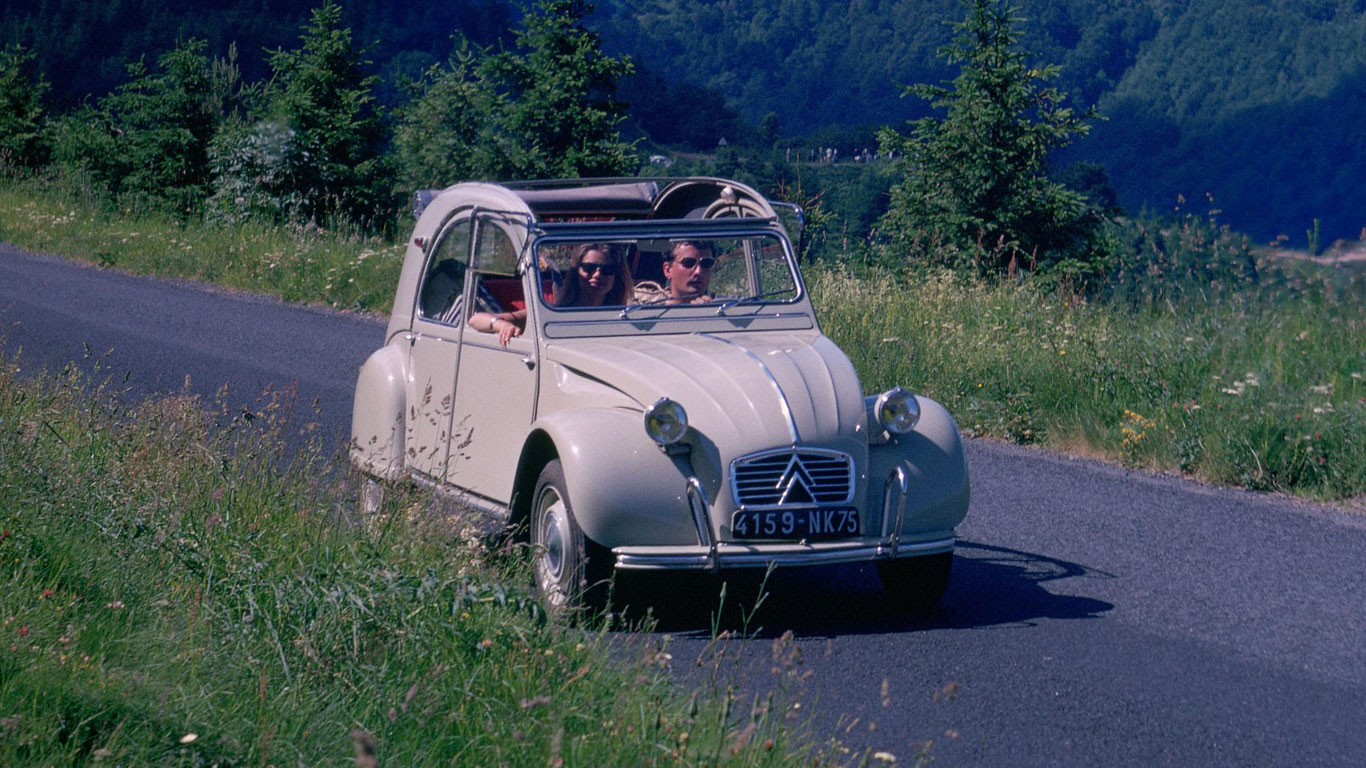
The 2CV AZAM was introduced in 1963 and was, by a considerable margin, the most luxurious 2CV to date. Stainless steel hubcaps, tubular over-riders, chrome brightwork, bespoke door handles and a fully upholstered velour interior were just some of the highlights. Other ‘luxuries’ included a passenger sun visor with mirror and an interior light.
Paris Motor Show 1965
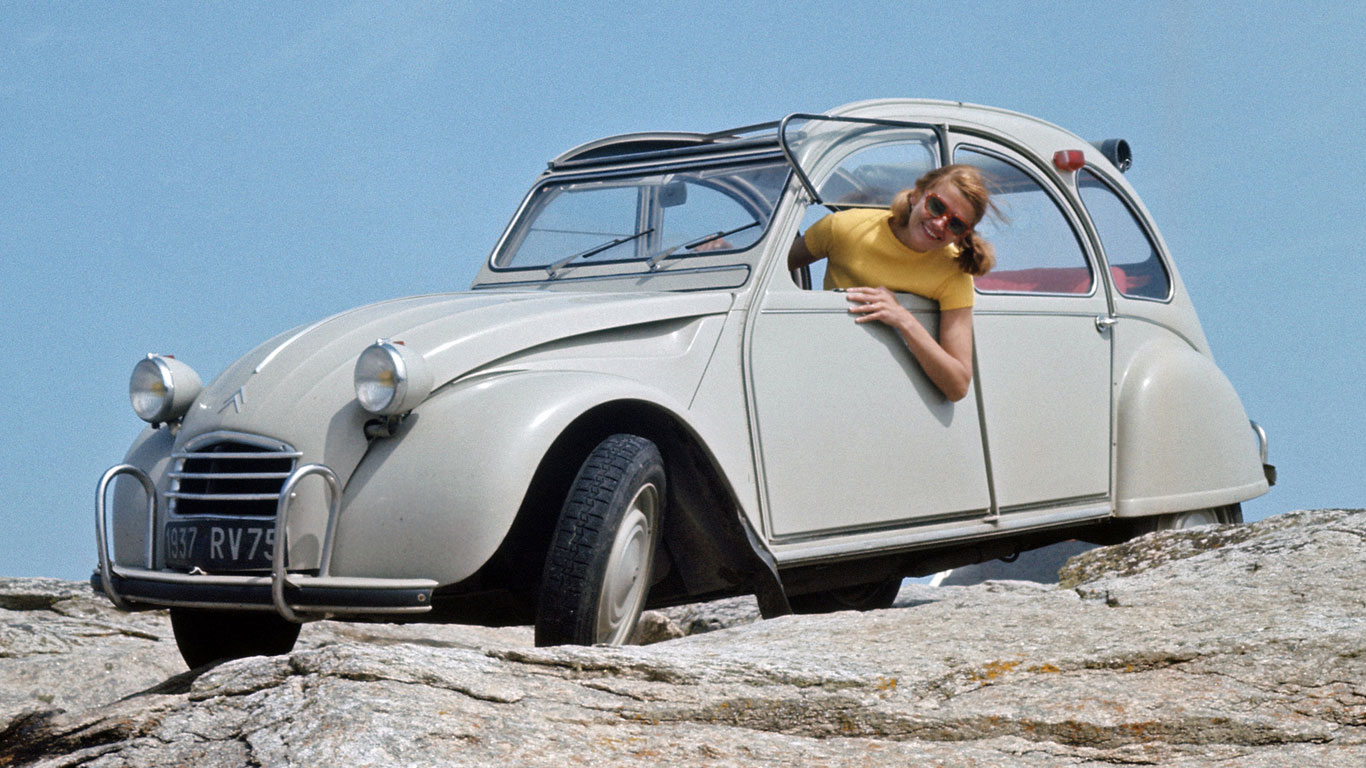
The Paris Motor Show of 1965 saw the Citroen 2CV gain a glazed rear quarter panel and a new three-bar grille. A year later, 2CV production peaked, with 168,384 saloons rolling out of the factory. Sales would begin to tail off for the remainder of the 1960s, but the 2CV wasn’t done yet.
Citroen 2CV6
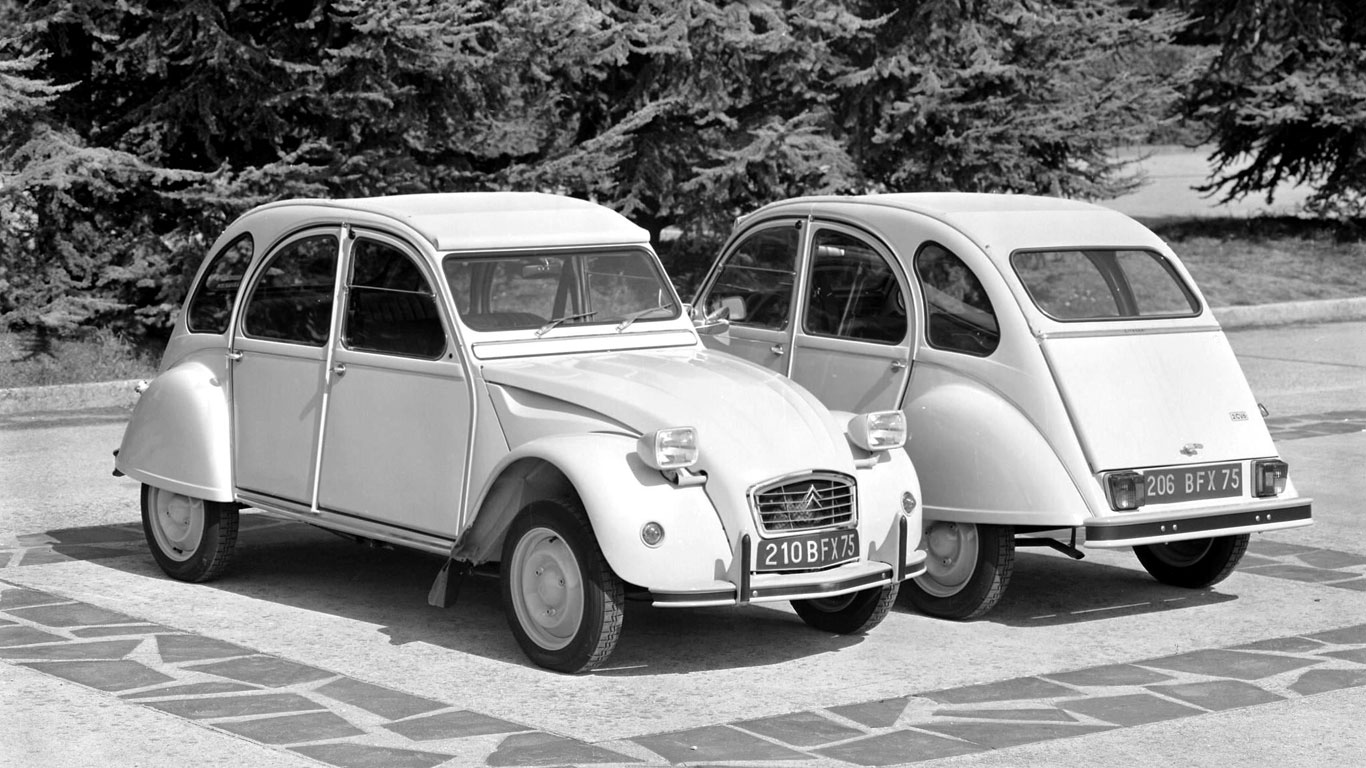
Production dropped to 98,685 in 1967, followed by 57,473 in 1968 and 72,044 in 1969. Citroen’s response was to introduce the 2CV6, powered by the 602cc engine of the recently introduced Dyane 6. Meanwhile, the 2CV4 gained the 435cc unit from the Dyane 4. Note the new rectangular headlights of 1970.
Oil Crisis of 1973-1974
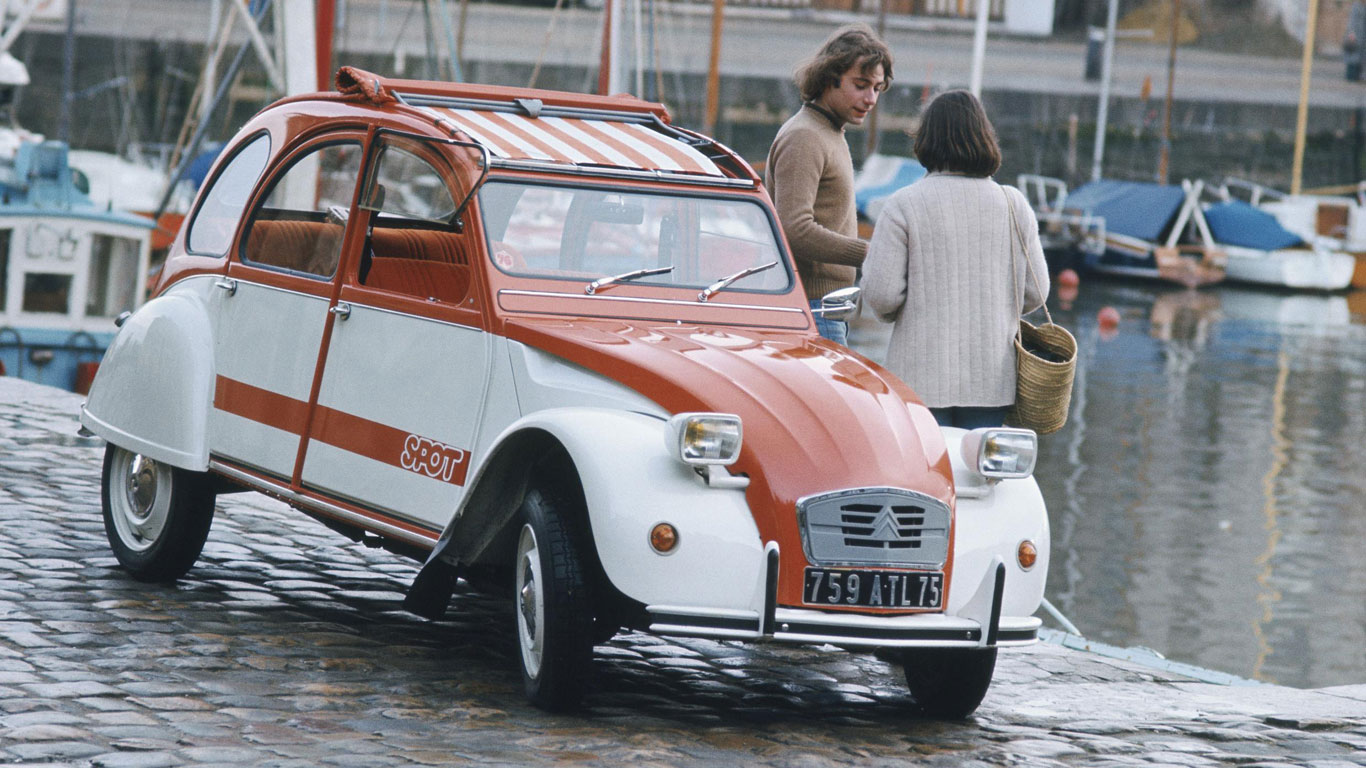
Production was on the way up once again, jumping to 121,096 in 1970 and as high as 163,143 in 1974. The reason for the upturn in fortunes: the oil crisis of 1973 and 1974, with buyers switching to fuel-efficient cars in their droves. Against all the odds, the Citroen 2CV was given a stay of execution.
Citroen 2CV Special
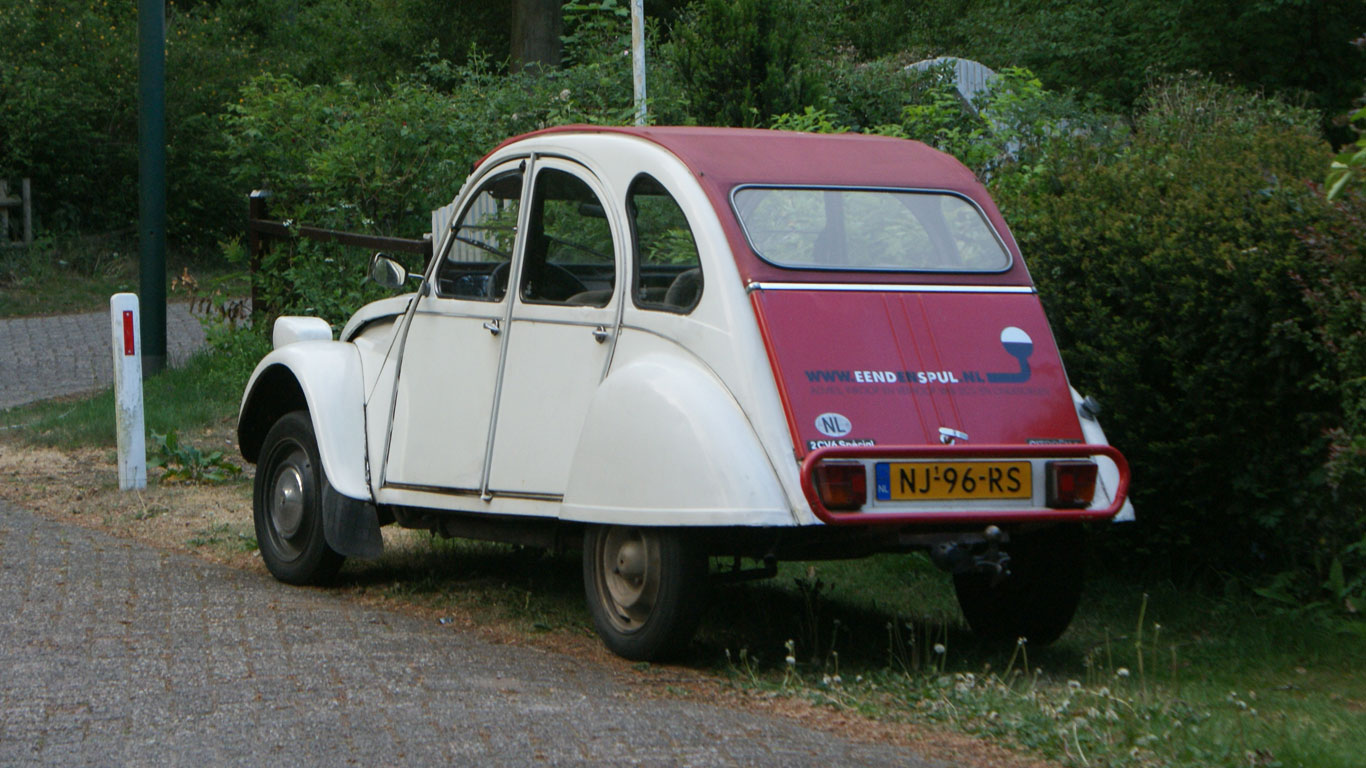
Of course, the Citroen 2CV was no longer the preserve of French farmers and winegrowers. By the 1970s, it had developed a cult following, presenting a more youthful and lifestyle-led image. Not that Citroen was ready to forget the 2CV’s roots, as it introduced the back-to-basics 2CV Special of 1975. The Special returned to the old instrument panel last seen in 1970, along with the familiar round headlights.
Last French-built 2CV
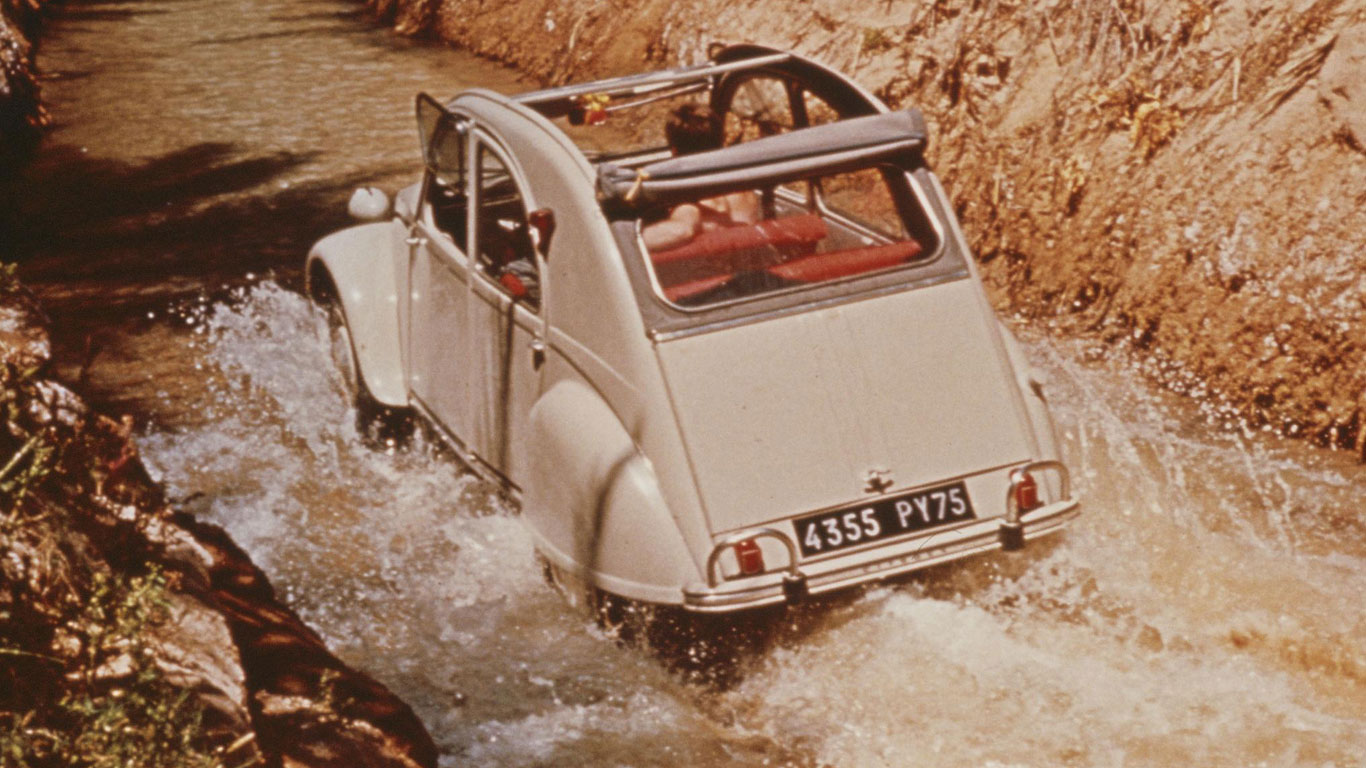
The 2CV continued to sell well in the UK, Germany and Belgium, but its time in the French sun was nearly over. The last French-built 2CV left the Levallois-Perret plant in 1988, bringing to an end four decades of production. The final French 2CV (not pictured) was a 2CV6 Special delivered to Roger Brioult. Sadly, the car was stolen from his house in 2012 and was later found burnt out. Roger died a week after learning about the theft of his beloved 2CV.
Last ever 2CV
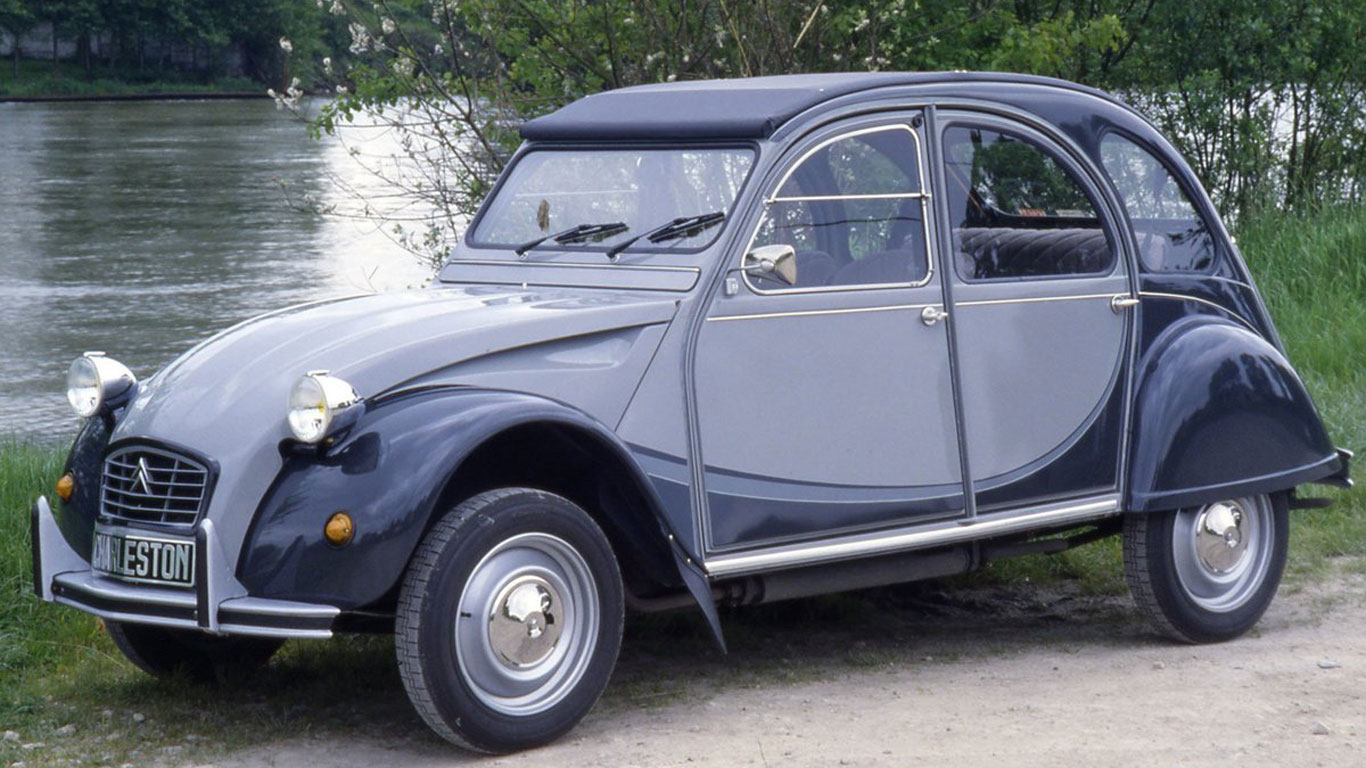
The last ever Citroen 2CV rolled off the production line 30 years ago in July 1990, with a special ceremony held to mark the occasion. According to the excellent Ran When Parked, the last 2CV – a two-tone grey Charleston – was purchased by Claude Herbert, the manager of the Mangualde plant in Portugal. The equally excellent Citroenet website claims that five additional 2CV Special models were built the following week.
Special editions
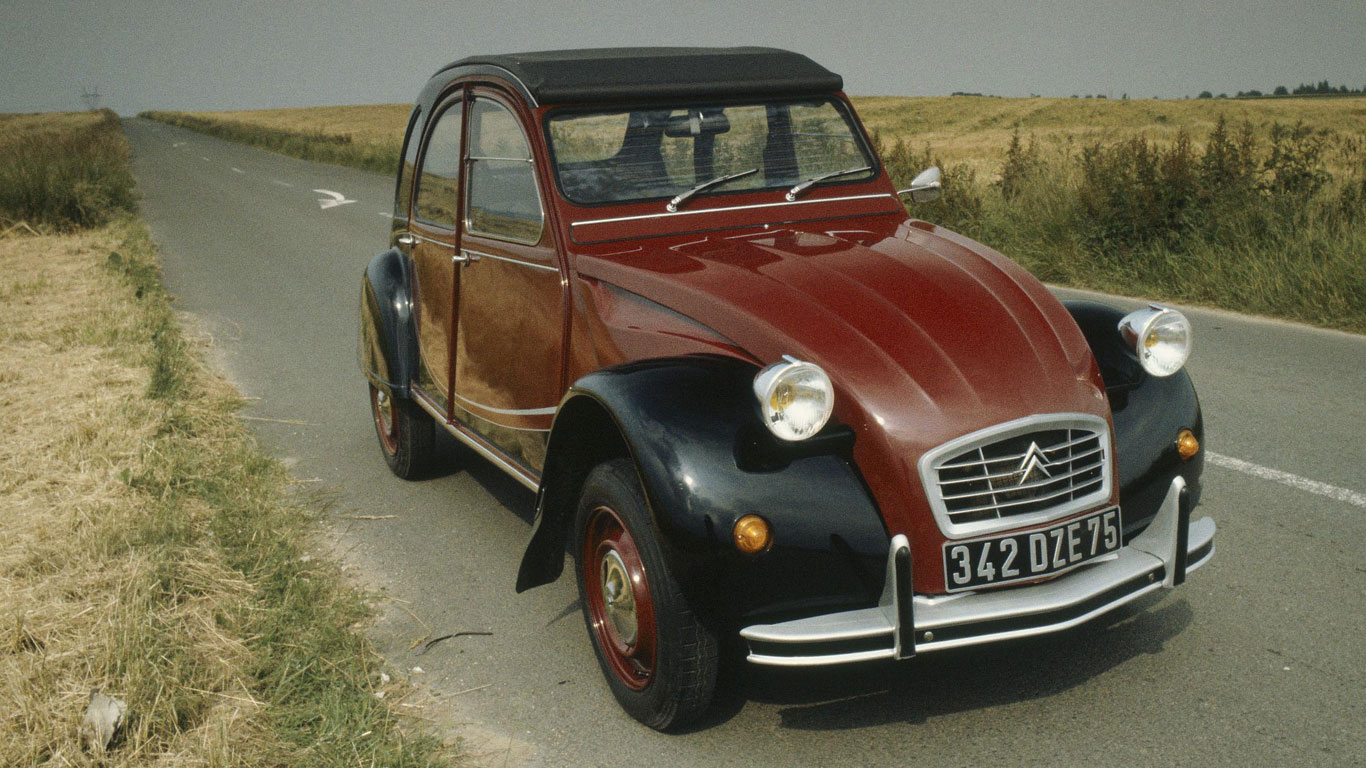
There were no shortage of special editions throughout the 2CV’s life, including the hugely successful Charleston, as seen here. In fact, it was so successful, the Charleston became a regular production model and remained on sale until the point at which the 2CV was withdrawn from sale. Other special editions include the Dolly, Beachcomber and 2CV-007.
James Bond
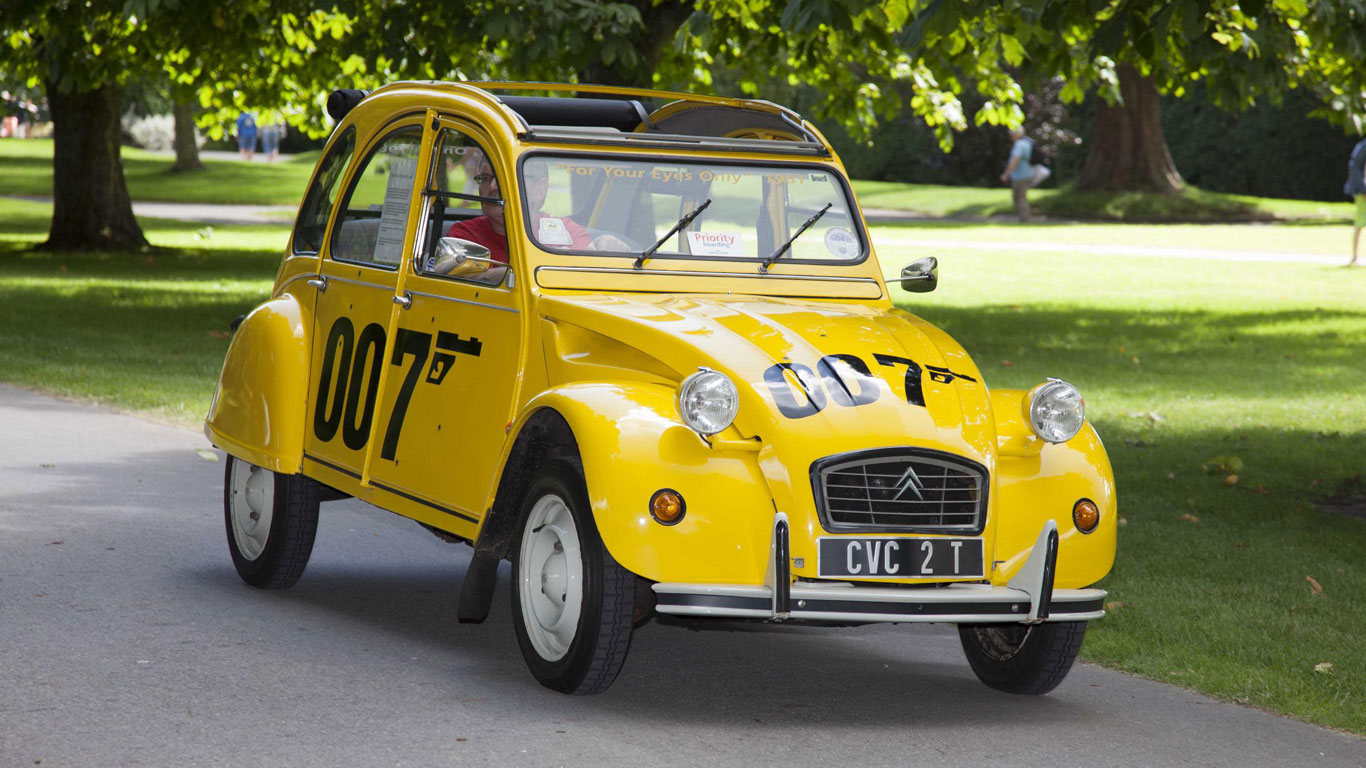
The 2CV-007 was based on the 2CV6 and launched to commemorate the car’s memorable appearance in the film For Your Eyes Only. Unlike the movie car, it didn’t feature the 1,015cc engine from the Citroen GS, but the bullet hole decals were presented to the owner to apply.
Special missions
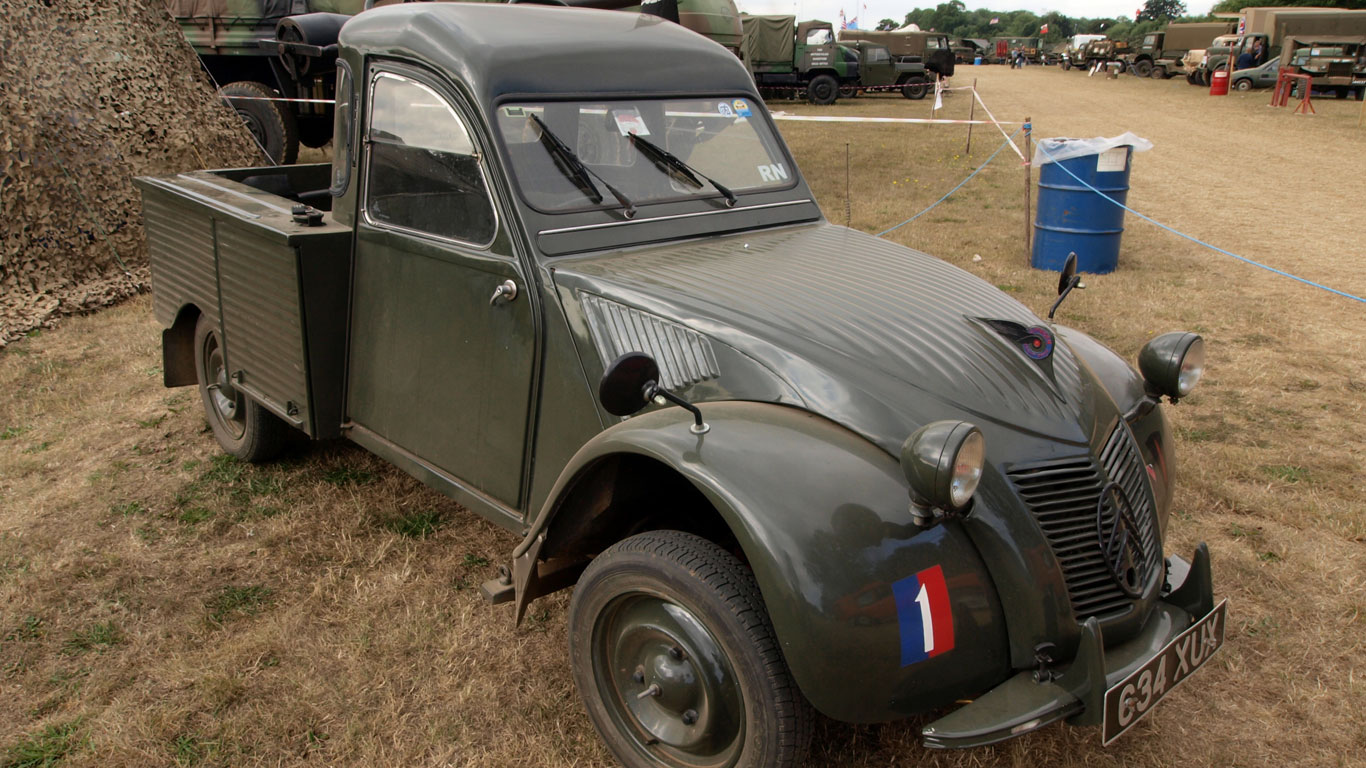
As if to prove that the 2CV can handle more than just a ploughed field, the Deux Chevaux has been present on many adventures. Mountain expeditions, commando duties for the Royal Navy, on call with UNICEF, and as an effective means to cross the spongy soil of Dutch polders, the Citroen 2CV has been there and done that.
UK-built Citroen 2CV
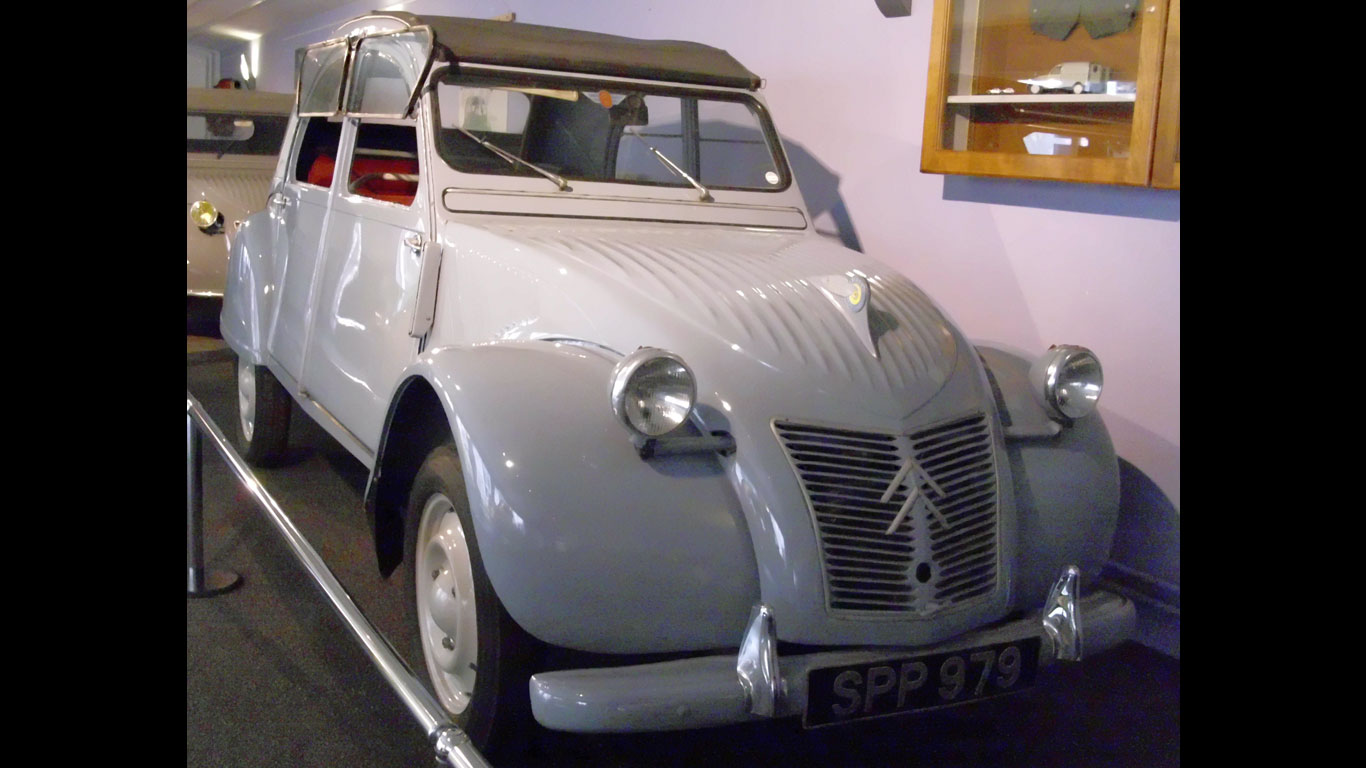
Surprisingly, the Citroen 2CV was also built at the old factory in Slough, using French mechanicals and bodies, but seats, trim, glass, lights and tyres from the UK. There were a number of visual changes, such as the bonnet badge and a choice of colours not available in France. Sadly, it was too expensive, and Citroen was forced into transforming the 2CV into the Bijou.
Citroen Bijou
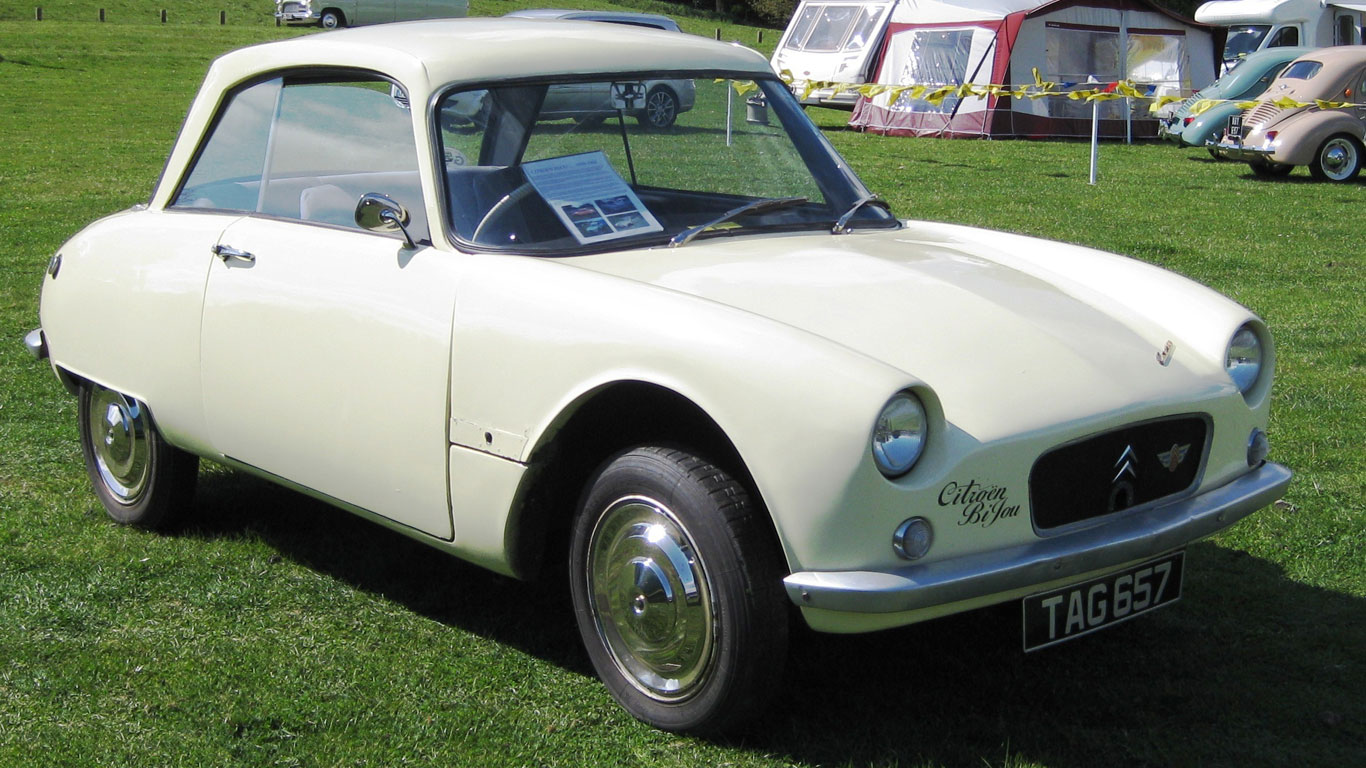
Launched at the 1959 London Motor Show, the 2CV-based Bijou featured a polyester-reinforced resin glass fibre body and the 425cc engine from the 2CV. This was only the European Citroen designed outside of France and was little more than a thinly-veiled attempt at making the 2CV more appealing to UK buyers. It was doomed to failure, with the arrival of the Mini sealing its fate.
Citroen 2CV van
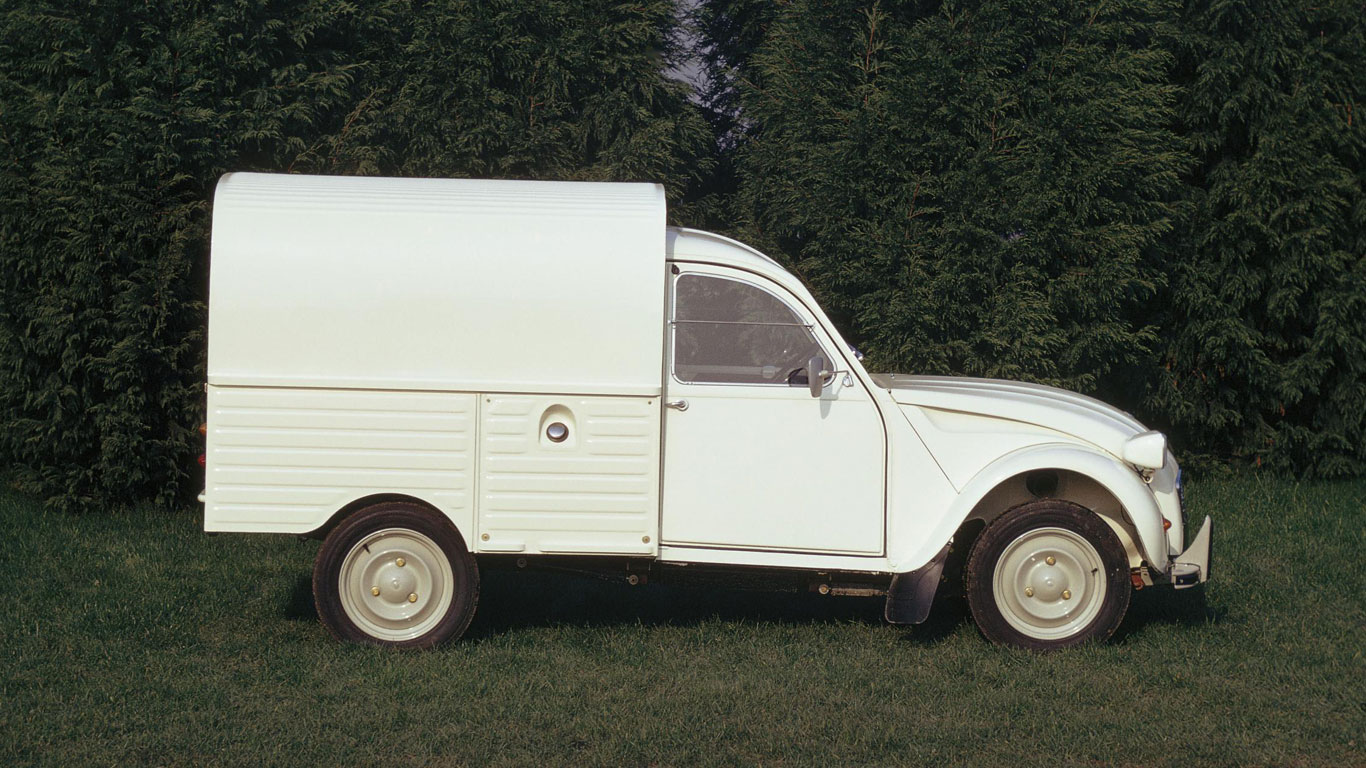
The Citroen 2CV van – or Fourgonnette – was unveiled at the 1950 Paris Motor Show and would become a hugely popular vehicle in France. Sales officially ended in 1978, when it was replaced by the Dyane-based Acadiane, but production continued until 1981 in order to supply vehicles to the French post office and EDF.
Video: World’s craziest 2CV driver in the South of France
Citroen Dyane
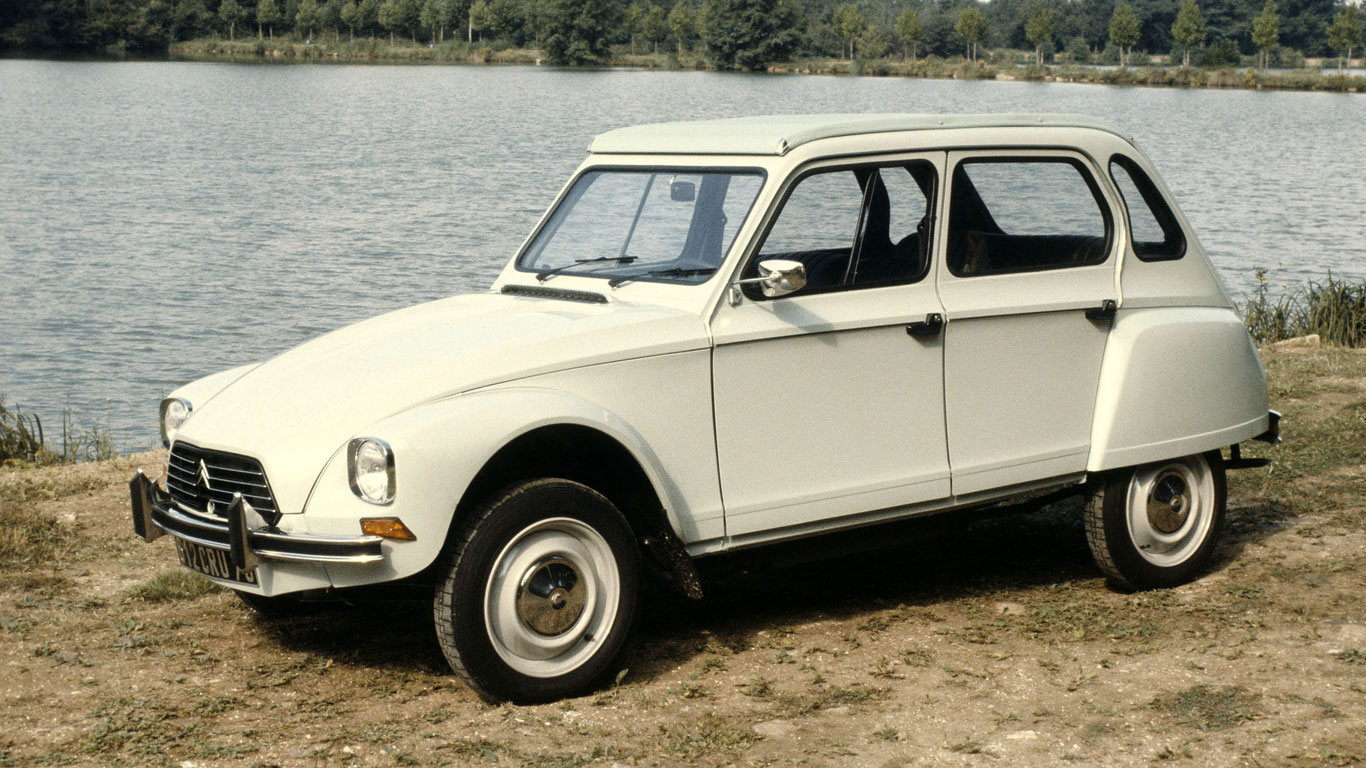
The 2CV-based Dyane was designed to occupy the space between the 2CV and the Ami, with Citroen hoping to appeal to a more youthful audience. It failed to hit the high notes of the 2CV, but the Dyane did manage to outperform its sibling in 1968, with a production total of 98,769 representing some 40,000 more than the 2CV.
Citroeneta / AX330
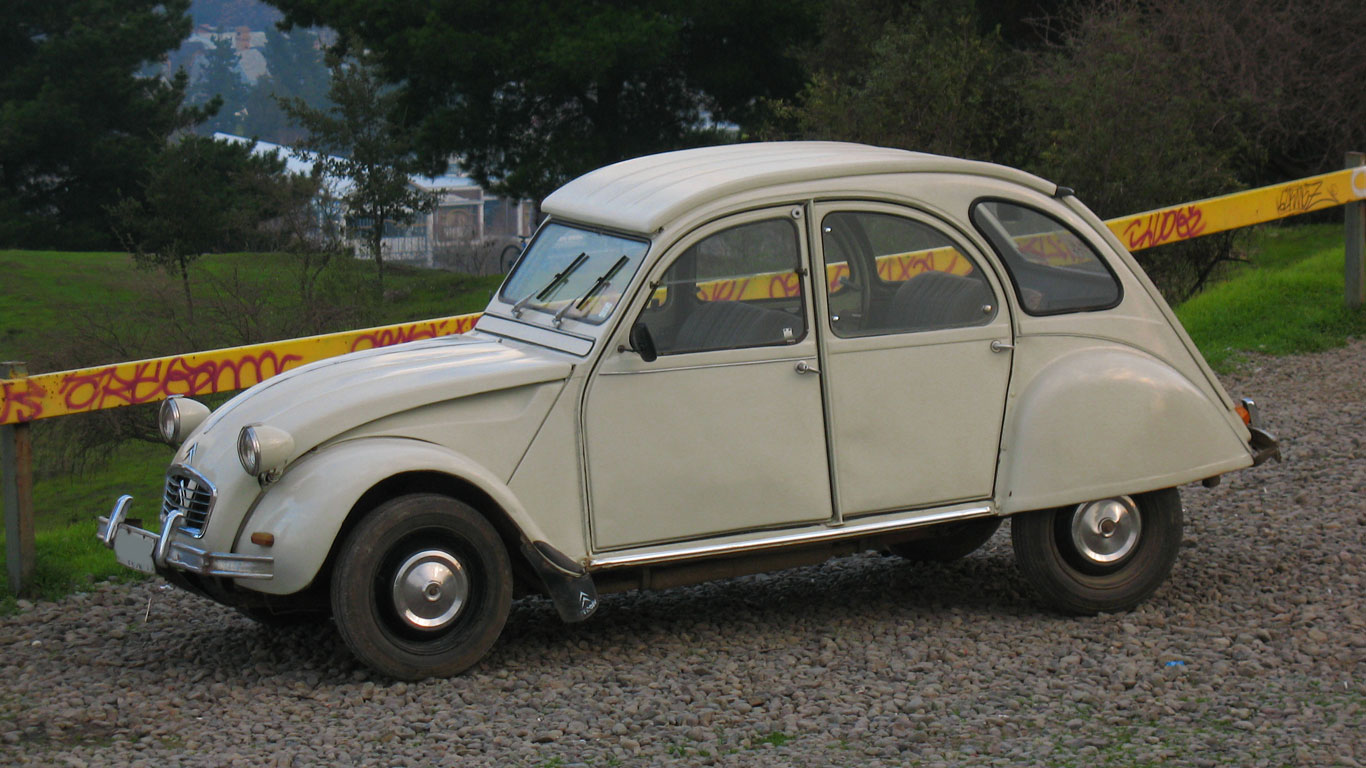
The Citroeneta was a bizarre looking three-box 2CV built by Citroen’s outpost in Chile. You may have seen it playing the role of back-up vehicle in the Top Gear Patagonia special. In 1970, the Citroeneta was replaced by the more conventional AX330 (pictured).
Citroen Mehari
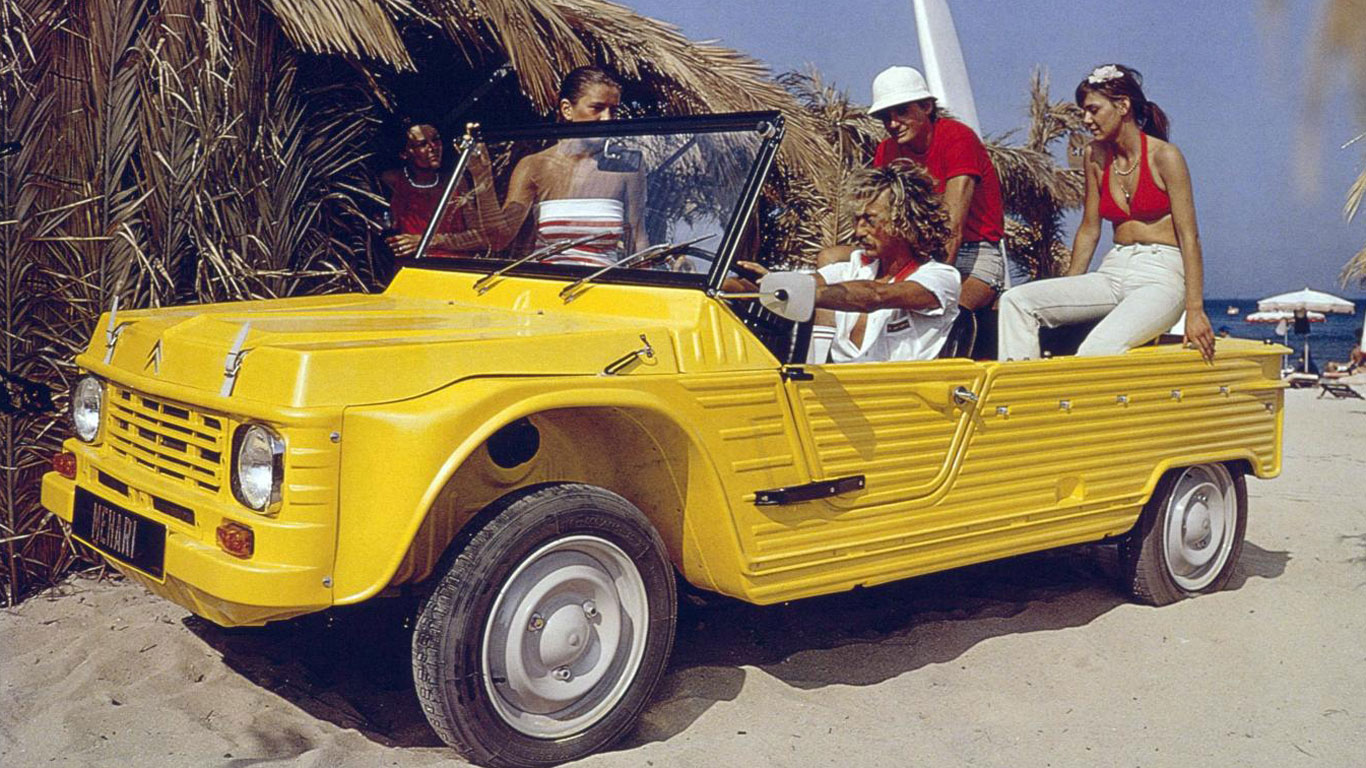
Not to be outdone by the 2CV, the Mehari celebrated its 50th anniversary in 2018. This leisure vehicle was based on the Dyane 6 and featured an ABS plastic body, which made it incredibly light at 525kg. The Mehari remained in production for almost 20 years, selling 145,000 vehicles in the process.
70 years of the Citroen 2CV
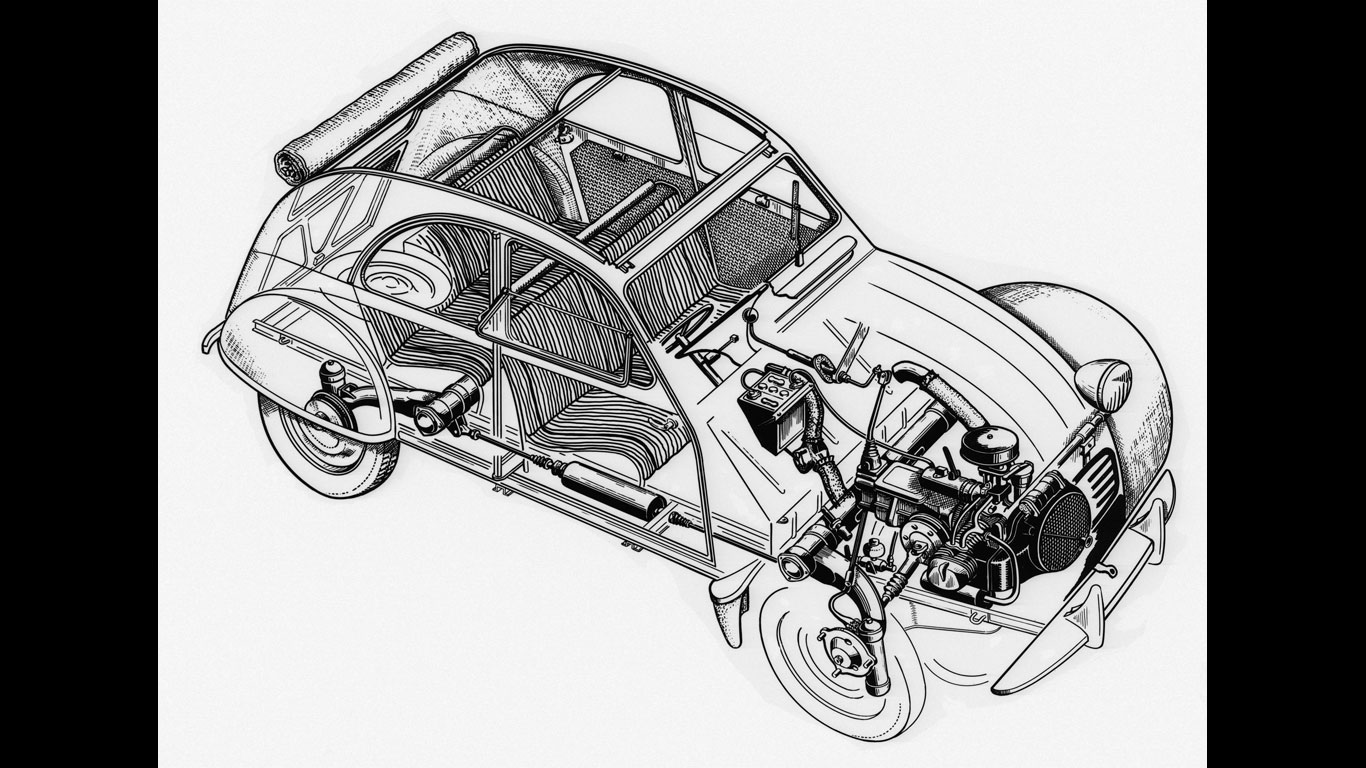
Citroen marked the 70th anniversary of the 2CV and 30th anniversary of the Mehari with a special display at the 2018 Retromobile Classic Car Show. On display were a 1939 Citroen TPV, a 1976 Citroen 2CV and a 1976 Citroen Mehari, along with other models from the brand’s past. A fitting tribute to a car that enjoyed a production run of 5,114,940 vehicles.
Acknowledgments: Citroen: Daring to be Different, by John Reynolds; Citroenet.org.uk; Ran When Parked; Le Double Chevron.
ALSO READ:



[…] a Goddess to a Tin Snail, the 2CV couldn’t be more different to the DS. But don’t let the rudimentary appearance fool you, […]
[…] in itself would be enough to secure a chapter in the history of the Citroen 2CV. However, the significance of the Charleston extends to the fact that it was also the last model to […]